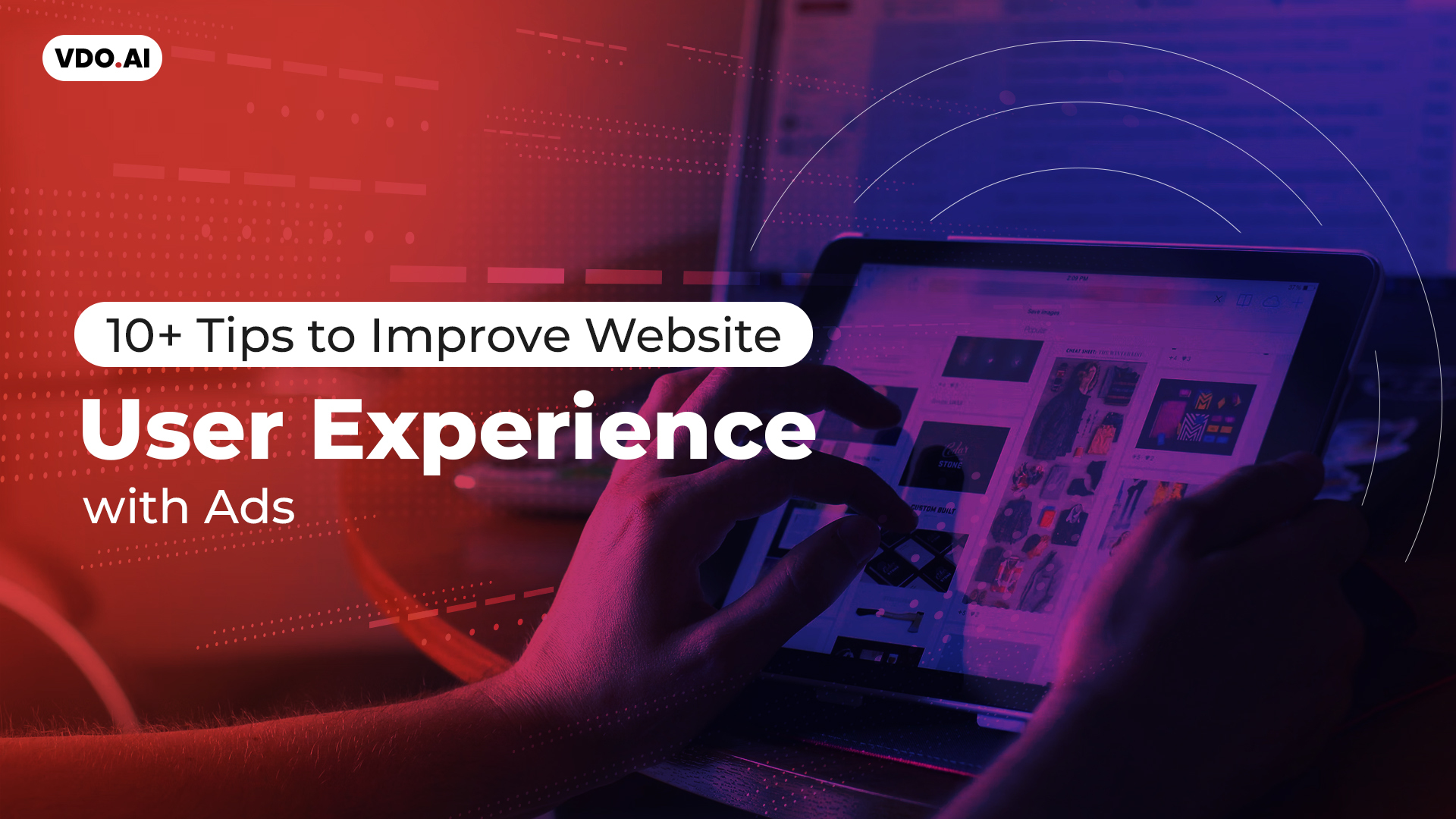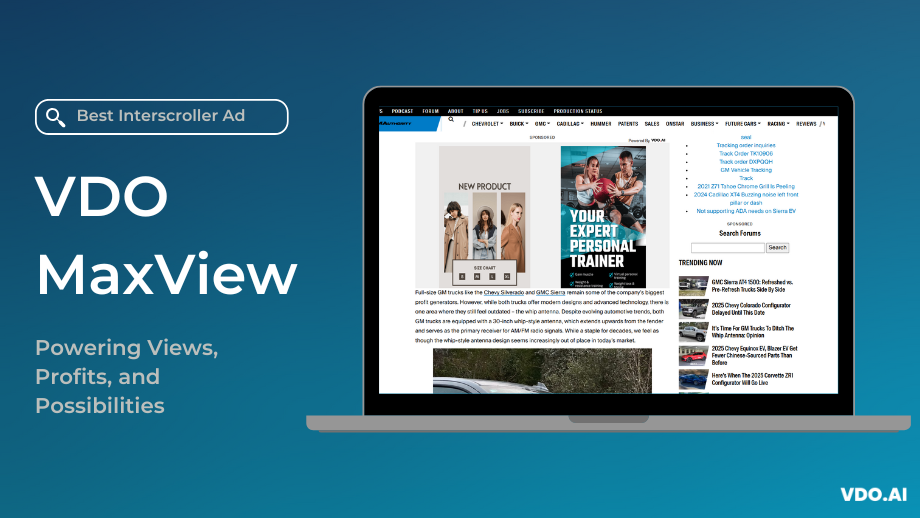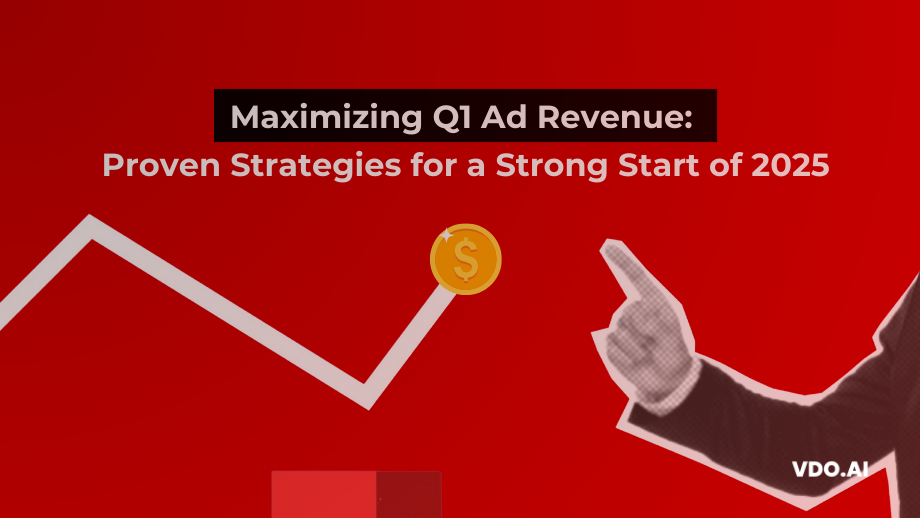10+ Tips to Improve Website User Experience with Ads
Reading Time: 9 minutesIncreasing user engagement on a website through advertising is every publisher’s objective. As digital publishers are firm believers of the saying “more ads equivalent to more revenue,” they sell ad space to premium advertisers on their websites in order to increase page views and enhance the website user experience. However, if publishers fill every space on their website with unwanted pop-up ads, it may create a distraction while they are reading the content and may urge them to leave the website.
User experience has gained a great deal of importance in recent years. As ads are a significant source of revenue for publishers, they should identify the most effective ways to integrate them into the user experience. Displaying ads almost everywhere without filters hamper the user experience and may result in long-term revenue to decrease. Even Google’s Page Experience update and Core Web Vitals emphasize on the importance of user experience as the most important SEO criteria for publishers.
We at VDO.AI consider seamless user experience a top priority while offering innovative and thoughtfully designed video ad solutions to web publishers. We strategically place ads on publisher’s websites in a way that they don’t hinder user experience and enable publishers to generate revenue from ads.
User experience: Meaning & Importance
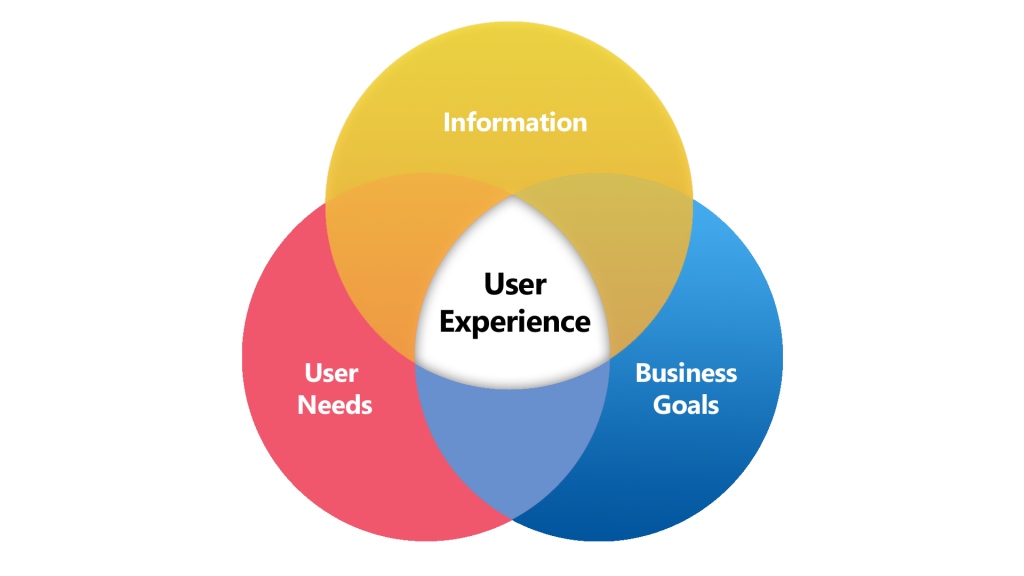
User experience, or UX, is about meeting the needs and interests of the user by creating any website easier to use, more accessible, and more useful.
Digital publishers displaying ads on their websites must pay careful attention to the user experience, as ads can have a detrimental effect on user behavior. When a user perceives that a display ad is interfering with their experience on a website, they leave and visit another site, causing publishers to lose ad revenue. Publishers can find new ways to generate revenue if they find a good balance between user experience and ads.
Tips to Improve Website User Experience with Ads
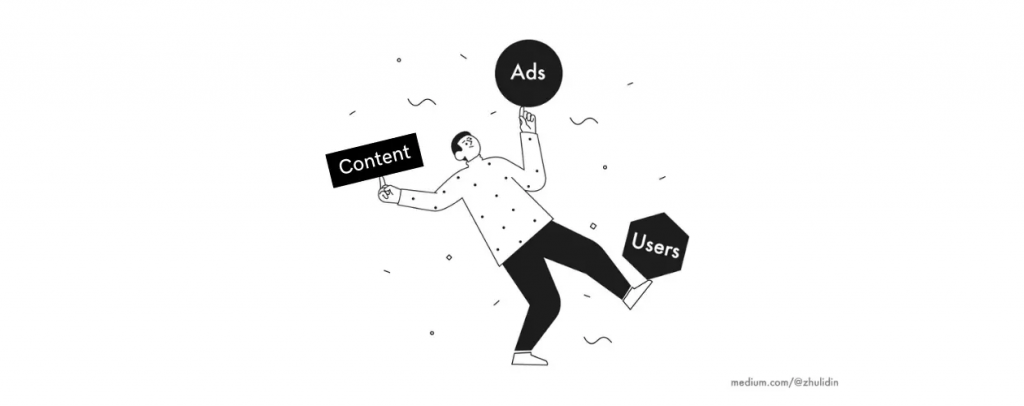
After the evolution of programmatic advertising, it was believed that expanding the number of ad spots on a website and the number of impressions provided to users would increase ad revenue. While an increase in impressions may indicate a rise in ad revenue per user, a decline in user engagement may cast doubt on the effectiveness of ads. If users believe that your website exhibits too many ads, whether intrusive or repeated, they may decide not to return. Moreover, with the proliferation of ad blockers, there is now a greater emphasis on creating advertisements that do not interfere with the user experience.
The process of generating an exceptional ad experience involves experimenting with the varieties of ads on a website and other elements. To effectively display ads on your website, you must adhere to some best practices. Here are a few helpful tips for digital publishers to help them ensure that their users have the best experience possible, even if there are ads on the site.
1. Avoid cluttering your website with ads
There is a general misconception that increasing the number of ad placements on a website can increase publishers’ revenue. The truth, however, is quite the opposite. Even Google recommends that ads should not occupy more than 50 percent of the display space. More advertisements on the website result in low CTRs, decreased user engagement, and poor ad viewability. This not only diminishes the advertising inventory’s worth but also affects the user experience. Moreover, an excessive number of ads on a website slows its loading speed.
Solution: Maintaining an ideal balance between content and ads on your website is essential. The optimal ratio of ads to content depends on the length of the content, user behavior, and the website layout. It is suggested that you use fewer ads and try out different variations and placements for the same.
2. Using non-intrusive ad formats
Intrusive ads, such as pop-up ads, encourage site users to employ ad blockers since they disrupt their reading experience, which results in a higher rate of user churn and a decrease in ad revenue. By selecting the optimal ad density and format, you can ensure a flawless user experience. Furthermore, Better Ads Standards-recognized intrusive ads as skippable.
Solution: You can replace annoying ad formats with less intrusive ones, such as interstitial advertising, which appears only when a user clicks on a call to action. In addition, these advertisements have a frequency limit of one ad per user each hour. Outstream video ads and rich media ads are two additional formats for advertising which attract high user engagement.
3. Reduce layout shifts
A layout shift occurs when a visible element on a web page alters its size or position, causing the content to shift or break from its original place. Ads may interfere with the user experience if the layout changes. “Cumulative Layout Shift” is even one of Google’s three Core Web Vitals signals.
Solution: Publishers can do the following to stop ads from changing the layout of their pages: By prefixing the height of the ad units, layout shifting will be prevented on single-page applications and lengthy article pages. Reserving a large ad spot allows the placement of smaller ads within it; The size of the advertisement slot can be determined using past data; and, Make sure there is enough space for the ad slot which will be used to show ads near the top of the viewport.
4. Avoid accidental taps on ads
Users have a tendency to move their thumbs or fingers in a variety of ways on the screen, which commonly results in inadvertent clicks on ads, taking them to the advertiser’s website. These clicks disrupt the user experience on your site. Even Google perceives an increase in accidental clicks as invalid output, resulting in the two-click penalty. As soon as a user clicks on an ad, Google requires a “visit site” link to appear on top of the ad. This can result in a large number of ad impressions and a decrease in CTR.
Solution: A clever website layout can be a potential answer to accidental clicks.
1. Never place ads over images, links, or texts on websites or applications.
2. Check your website on phones and tablets to make sure there are no accidental clicks.
3. Maintain a sufficient distance between the content and ads. The minimum banner padding should be 10px.
4. Ensure that the buttons on your advertising (CTA button, links, forms, etc.) have a minimum width and height of 48 CSS pixels so that users can easily click on them.
5. Never disguise ads as content, as doing so can violate Google’s regulations and result in the suspension of your website’s ability to display content. The ads should be placed in a location that distinguishes them from the content.
5. Label your ads
As a publisher, you must clearly indicate that the ads on your website are “Advertisement” and not original content. Not doing so will make the users feel duped if they accidentally click on the ads. If you violate the trust of your audiences, the user experience will suffer and you may lose them permanently.
Solution: To maintain transparency, label your advertisements as “Advertisements” and your sponsored content as “Sponsored.” This allows users to effectively discern between original content and ads.
6. Enhance ad viewability
Ad viewability improves both ad revenue and user experience, despite the seeming contradiction. Users typically ignore banner advertisements, causing publishers to lose a substantial amount of revenue. A similar case is with users who choose not to view the areas of websites where ads are most prevalent. In order to avoid banner-blindness, publishers need to ensure that their ads are more visible by strategically placing them in positions where the possibility of user-interaction is greater.
Solution: Adopt creative, non-intrusive ad formats that promise high ad viewability, such as native ads and sticky ads. Publishers of news websites with copious amounts of display materials have the option to implement an endless scroll, in which content is continually added to the page as the user moves through the page. This lets the publishers give their readers uninterrupted user experiences and show them more ads in a single session.
7. Improve ad loading times
JavaScript-generated ads contribute to page-load time/page latency. A high page latency is detrimental to the website’s loading speed and user experience. If an ad takes too much time to load, the user may leave your website, causing you to lose ad revenue.
Solutions: The best solutions to enhance your ad load time are:
1. Try lazy-loading for ads that are not visible. Thus, such advertisements will not be loaded instantaneously and will take additional execution time.
2. Employ header-bidding wrappers to load scripts from third parties asynchronously. Henceforth, the ads and the content on the requested pages will load more quickly.
3. AMP ads are mobile ads that are made to be lighter, faster, and more useful for people.
4. Utilize server-to-server header bidding wrapper to load ads outside of the user’s browser on devices with slower internet connections.
8. Try personalized ads
Personalized ads are more effective than contextual ads since they examine user data on many aspects, such as geographic location, demographics, behavior, interests, device, time, weather, and more, to determine what the user wants. These ads provide publishers with more revenue because they have a comprehensive awareness of their consumers’ interests and prevent them from annoying their users with irrelevant ads.
Solution: Our programmatic personalized video advertising solutions are tailored to the user’s preferences and ensure a positive user experience.
9. Leverage native advertising
As per the study conducted by eMarketer, native advertising had exploded in recent years as it has garnered a lot of attention from publishers and advertisers as an ad format that is less obtrusive to the user experience. For this reason, this type of advertising is lauded as a potentially sustainable solution to interruptive ad experiences, which led to the increase in ad blocking.
Solution: So, publishers shouldn’t think of native ads as a silver bullet. Instead, they should leverage this new ad format in the way users expect it to like native ads in the vernacular language of the users.
10. User expectation is the new UX
Understanding user expectations is now the key to achieving the ultimate user experience. The expectations of the users and the factors that contribute to a good user experience can vary a lot. With so many ad formats available, the determination of user expectations by publishers for them would be challenging.
Solution: Adapting ad formats to new (read: mobile and digital) publisher contexts is, therefore, the key to meeting user expectations. It is through these new channels that publishers and brands have the best chance of aligning user expectations with the ad formats that will support them.
11. Analyze and optimize
Examining the websites of your competitors may help you in enhancing your user experience through ads. Analyze the ad placements on their landing pages, the types of ads they’re displaying, the ad spots they’ve selected, and more. By considering all of these aspects, you can maximize the viewability of your ads and evaluate their performance in increasing ad revenue while ensuring that they do not interfere with the user experience.
Solution: Constant tweaking of your ads will help you meet the needs of your users. You can create ads in the user’s vernacular language or include text-based chat functions to your website to make it more fun for them.
12. Keeping ads and content in sync
The user experience is enhanced when ads on a website are ideologically symmetrical with the content. Users appreciate ads that are relevant to the content they are reading. These ads assist users in locating their desired goods, hence enhancing the user experience.
Solution: Programmatic contextual ads are the most effective way to increase user engagement and ad revenue. These ads reinforce the concept of the content and encourage users to take action by clicking the ad.
13. User surveys and feedback
By obtaining user feedback on the content or products, publishers will be able to determine what users are looking for on their website or if they are experiencing trouble with the ads. These surveys inform publishers regarding their content and advertising, and incorporating their feedback will enhance the user experience.
Solution: User surveys and feedback help publishers in selecting the next ad campaign to run on their website to increase user engagement.
14. Leverage social media links
Publishers can request advertisers or ad networks to enhance the effectiveness of ad campaigns on their websites by including social media links or share buttons. These links and buttons boost user engagement by encouraging the audience to click on the ad and visit the advertisers’ social media accounts.
15. Associating with the right monetization platform
The advantages of collaborating with our monetization platform are vast in scope. Our competitive header bidding solution enables publishers to produce additional revenue with fewer ad placements. We adopt high standards to ensure a seamless user experience. Our unique and profitable video ad solutions enable publishers across channels to generate additional revenue while ensuring a great user engagement and platform monetization.
Ads That Disrupt Website User Experience
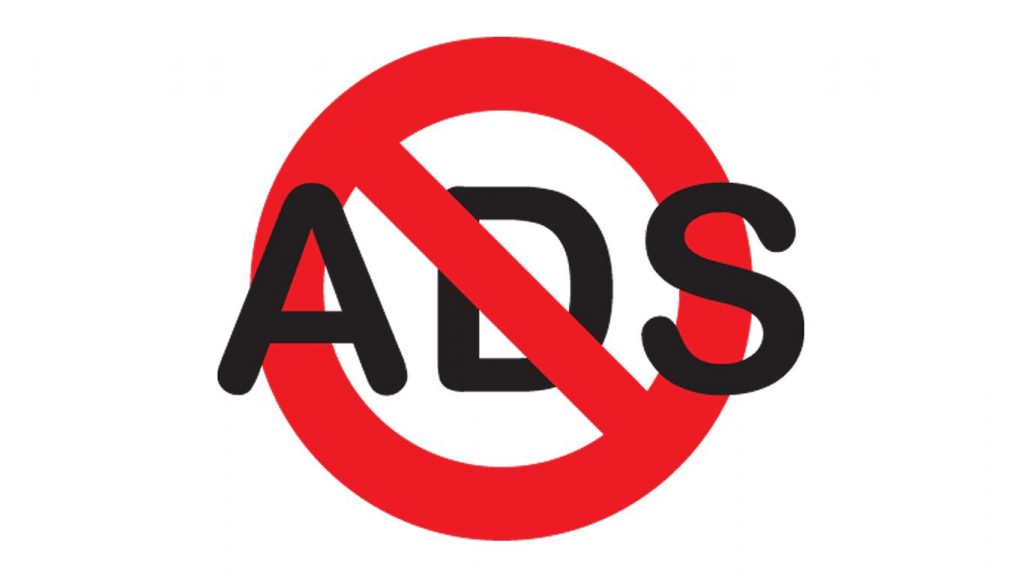
According to a study conducted by the Coalition for Better Ads, certain ad experiences can irritate the user.
- Pop-up ads: These ads are intrusive and hinder the user’s ability to consume content since they hide the primary content.
- Large sticky ads: These ads display at the bottom of the screen and occupy about 30 percent of the screen, making it impossible for the users to view the information.
- Prestitial ads with timers: Such ads abrade the users since they have to wait until they are completed.
- Full-screen scroll-over ads: These ads show on top of the page’s content and require the user to scroll them over. They predominantly appear on mobile devices, leading to a distraction.
- Flashing animated ads: These ads are incredibly extravagant and their colors are constantly changing hampering the user experience.
Improve Website User Experiences With VDO.AI
VDO.AI understands the true value of user experience for digital publishers. After analyzing the demands and behavior of your website’s users, our team of professionals offers you the most effective video advertising solutions like native advertisements and setting up recirculation units on the website. These web monetization solutions guarantee a stellar user experience, increased time on site, and more new pageviews for publishers.
Additionally, our full-stack CTV monetization solutions enable CTV publishers to go an extra mile to achieve good user experience by embedding QR codes in ads while augmenting their ad revenue significantly.
Interested?
Reach us at [email protected].
